Chinese Mayapple Podophyllum pleianthum

ABOUT
The plant often referred to as the Chinese mayapple, has a distinctive appearance that catches the eye in shaded garden spaces or woodland areas where it naturally occurs. This plant is characterized by its umbrella-like leaves that are deeply lobed, creating a unique and lush look. The leaves are usually broad and can have varying tones of green, sometimes adorned with spots or variegations that add to its striking appearance. Below the large leaves, this plant produces flowers that are typically hidden beneath the foliage, making them somewhat mysterious to the casual observer. These blossoms are bell-shaped and can range in color, though they are often a soft shade of white or pale pink, with many stamens at their center, creating a pom-pom-like effect. Once the flowering period concludes, the plant forms fruit which also remains underneath the large leaves. These fruits are rather inconspicuous when compared to the showy leaves and delicate flowers, thus maintaining the overall enigmatic appeal of the plant.
About this plant
 Names
NamesFamily
Berberidaceae
Synonyms
Chinese Mayapple, Dwarf Mayapple, Asian Mayapple
Common names
Dysosma pleiantha, Podophyllum aurantiocaule, Podophyllum hexandrum var. chinense, Podophyllum pleianthum var. atropurpureum, Podophyllum versipelle.
 Toxicity
ToxicityTo humans
Podophyllum pleianthum, commonly known as the Mayapple, contains several toxic compounds, including podophyllotoxin, which is a potent cytotoxin. This plant is poisonous if ingested and can cause symptoms such as vomiting, diarrhea, abdominal pain, and potentially severe and life-threatening complications like respiratory failure and central nervous system depression if consumed in large quantities. All parts of the Mayapple are toxic, especially the roots and unripe fruit. Ingestion of any parts of the plant should be considered a medical emergency and prompt medical attention is necessary.
To pets
The Mayapple is also toxic to pets due to the presence of podophyllotoxin among other compounds. Symptoms of poisoning in pets can include vomiting, diarrhea, lethargy, difficulty breathing, and seizures. In severe cases, ingestion of the Mayapple can lead to coma or death. As with humans, all parts of the plant are poisonous, with the roots and unripe fruit being the most toxic. Any pet suspected of ingesting part of a Mayapple plant should receive immediate veterinary care.
 Characteristics
CharacteristicsLife cycle
Perennials
Foliage type
Deciduous
Color of leaves
Green
Flower color
White
Height
1-1.5 feet (30-45 cm)
Spread
1-1.5 feet (30-45 cm)
Plant type
Herb
Hardiness zones
7
Native area
China
Benefits
 General Benefits
General Benefits- Ornamental Value: Podophyllum pleianthum, commonly known as the Chinese Mayapple, is valued for its unique umbrella-like leaves and attractive white flowers, making it a visually interesting addition to shade gardens.
- Shade Tolerance: This plant thrives in shady environments where other plants might struggle, allowing gardeners to beautify less sunny spots in their landscape.
- Ground Cover: With its broad leaves, the Chinese Mayapple provides excellent ground cover, which can help suppress weeds and maintain soil moisture.
- Natural Habitat Support: It serves as a natural part of woodland ecosystems, providing habitat and food for native insects and other wildlife.
- Low Maintenance: Once established, this perennial requires minimal care, which can be ideal for gardeners looking for low-maintenance landscaping options.
- Erosion Control: Its root system helps stabilize soil and can prevent erosion on shady slopes or in wooded areas.
- Seasonal Interest: The plant offers seasonal changes in appearance, with attractive foliage in spring and summer, and sometimes produces fruit that adds additional visual interest in late summer or fall.
 Medical Properties
Medical Properties- Antitumor activity: Extracts of Podophyllum pleianthum have been studied for their potential to inhibit tumor growth.
- Laxative effects: Components like podophyllotoxin have been used historically due to their purgative properties.
- Antiviral properties: The plant has been researched for its use in treating viral infections, particularly due to podophyllotoxin.
- Anti-rheumatic: Traditionally, the plant has been used to help relieve symptoms associated with rheumatism.
 Air-purifying Qualities
Air-purifying QualitiesThis plant is not specifically known for air purifying qualities.
 Other Uses
Other Uses- Ornamental Plant: Due to its large, attractive leaves and showy flowers, Mayapple is often used in shade gardens and woodland plantings for ornamental purposes.
- Ground Cover: Mayapple's dense foliage can be used to cover the ground in shaded areas, suppressing weed growth and preventing soil erosion.
- Fruit Jelly: The ripe fruit of Mayapple is occasionally used to make a lemon-flavored jelly, though care must be taken to use only the edible ripe fruit, as the rest of the plant is toxic.
- Photography Subject: The unique appearance of Mayapple makes it a popular subject for photographers specializing in botanical and nature imagery.
- Cultural Symbolism: In certain cultures, Mayapple is incorporated into rituals and traditions due to its distinctive growth pattern and lifecycle.
- Education and Research: Mayapple can be used in educational settings to teach about native plant species, propagation, and the ecological role in forest environments.
- Insect Habitat: The large leaves of Mayapple provide shelter for various insects, contributing to the biodiversity of garden ecosystems.
- Natural Dye: The yellow root of the Mayapple contains berberine and can be used to produce a yellow dye for textiles, though this is not a common use.
- Theme Gardens: Mayapple is included in fairy or gnome-themed gardens to create a whimsical atmosphere with its umbrella-like leaves.
- Landscape Restoration: Mayapple can be utilized in restoration projects to help recover the native plant community in areas where the local flora has been disturbed or degraded.
Interesting Facts
 Feng Shui
Feng ShuiThe Mayapple is not used in Feng Shui practice.
 Zodiac Sign Compitability
Zodiac Sign CompitabilityThe Mayapple is not used in astrology practice.
 Plant Symbolism
Plant Symbolism- Mystery and Secrecy: Podophyllum pleianthum, commonly known as "Mayapple," has a secretive nature due to the single flower blooming underneath its large leaves, hidden from immediate view.
- Medicinal Properties: Mayapple has been used for its medicinal properties in traditional medicine, representing healing and the hidden power of nature to cure ailments.
- Protection: The umbrella-like leaves of Mayapple suggest shelter and protection, symbolizing care and refuge in various cultures.
- Uniqueness and Rarity: As Mayapple is not found ubiquitously and has a distinctive appearance, it conveys the essence of uniqueness and the value of rare beauty in the plant world.
 Water
WaterThe Chinese mayapple should be watered deeply but infrequently, allowing the soil to slightly dry out between waterings. A good rule is to water this plant roughly once a week with about 1-2 gallons of water, adjusting for climate and season. During the growing season in spring and summer, ensure consistent moisture, especially if the weather is dry. In fall and winter, reduce the amount of water as the plant’s growth slows down. Over-watering can lead to root rot, so it's crucial to ensure good drainage and prevent water from standing in the saucer or pot.
 Light
LightThe Chinese mayapple thrives in partial to full shade, making it well-suited for a shady spot in the garden or indoors. It should be protected from direct sunlight, which can scorch its leaves. For optimal growth, situate the plant in an area where it can receive filtered light or a few hours of morning sun followed by shade during the hottest part of the day.
 Temperature
TemperatureThe Chinese mayapple prefers a temperature range between 50°F to 75°F but can tolerate temperatures as low as 30°F and as high as 80°F. Protect the plant from extreme temperatures and harsh conditions by placing it in an environment that maintains a relatively stable temperature within its preferred range. Avoid placing the plant near heating vents, air conditioners, or drafty windows.
 Pruning
PruningPruning the Chinese mayapple is generally done to remove dead or damaged foliage and to maintain plant health. It's best to prune in late winter or early spring before new growth begins. Prune sparingly and only as needed to remove the old leaves after they die back naturally at the end of the growing season or to shape the plant.
 Cleaning
CleaningAs needed
 Soil
SoilMayapple requires a soil mix rich in organic matter, slightly acidic to neutral pH between 5.5 and 7. A mix combining loam, peat moss, and perlite or pine bark works well, providing good drainage and moisture retention.
 Repotting
RepottingMayapples should be repotted every 2-3 years or when they become root-bound. Spring is the best time to repot as the plant exits dormancy and before the new growth starts.
 Humidity & Misting
Humidity & MistingMayapples prefer high humidity levels, ideally between 60% to 80%. They thrive in a moist environment which mimics their native woodland habitats.
 Suitable locations
Suitable locationsIndoor
Place Mayapple in indirect light, high humidity, and cool temperatures.
Outdoor
Choose shaded area, moist soil, protect from intense sun and wind.
Hardiness zone
5-9 USDA
 Life cycle
Life cyclePodophyllum pleianthum, commonly known as the Dwarf Mayapple, begins its life cycle when seeds are dispersed by animals or through self-sowing. After overwintering, seed germination occurs in spring, usually requiring a period of cold stratification to break seed dormancy. The next stage is the emergence of a single umbrella-like leaf for non-flowering plants or a pair of leaves when it's mature enough to reproduce. Once it attains maturity, the Dwarf Mayapple produces a single, nodding flower from the axil between the two leaves, which typically blooms in late spring. Following pollination, which is often facilitated by bees, the flower develops into a fleshy fruit by late summer. The plant then enters dormancy in the fall, with the aboveground parts dying back and the cycle beginning again the following spring with new growth from the perennial rhizome.
 Propogation
PropogationPropogation time
Spring
Podophyllum pleianthum, commonly referred to as Chinese mayapple, is typically propagated through division of its rhizomes. This is commonly done in the fall after the leaves have died back or in early spring before new growth begins. To propagate, carefully dig up the plant, making sure not to damage the rhizomes. Using a sharp knife, cut the rhizome into sections, each with at least one growth bud. The sections should then be replanted at the same depth they were growing at previously, spacing them about 12 inches (approximately 30 centimeters) apart to allow for growth. Water the newly planted sections well to help establish them. This method is favored due to its simplicity and the ability to produce more plants that are genetically identical to the parent.

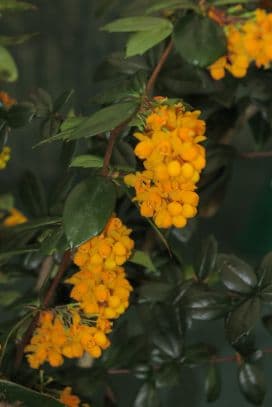
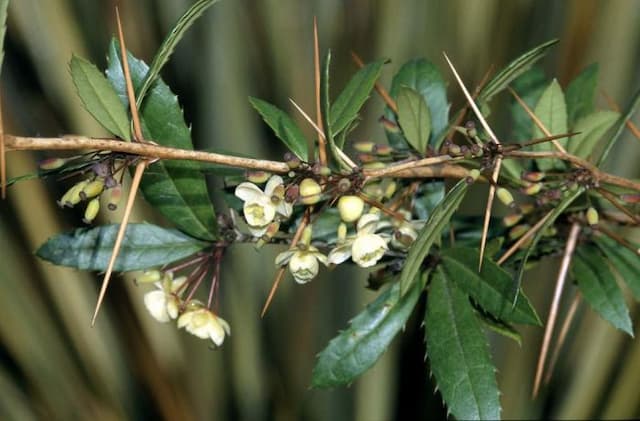
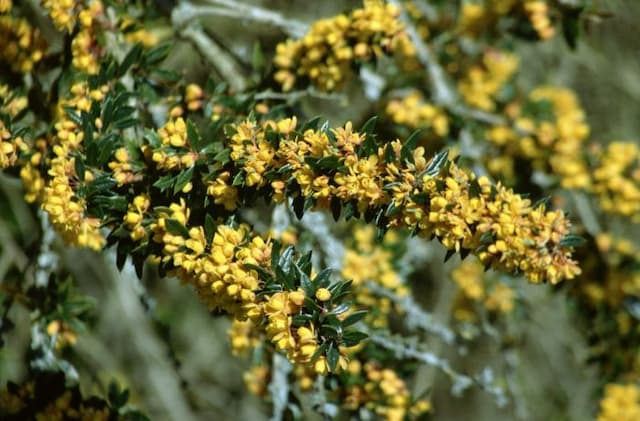
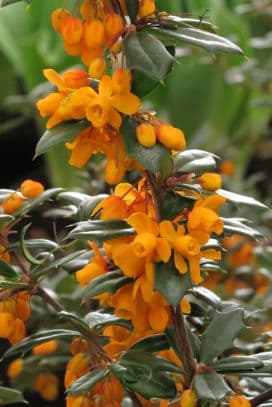
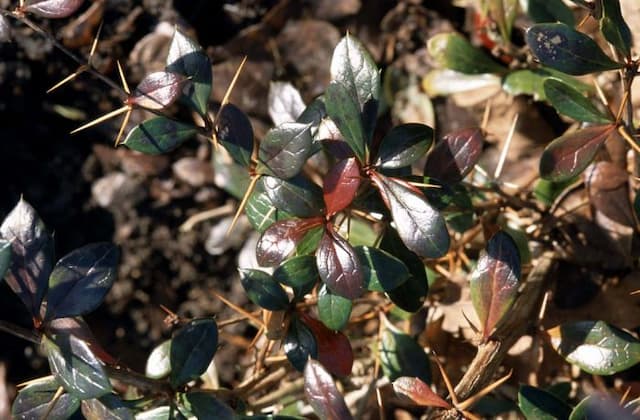


![Japanese barberry [Bonanza Gold]](/_next/image?url=https%3A%2F%2Fplants-admin.emdemapps.com%2Fimages%2Fplants%2F%2Fimages%2F604b5385e413f.png&w=640&q=75)
